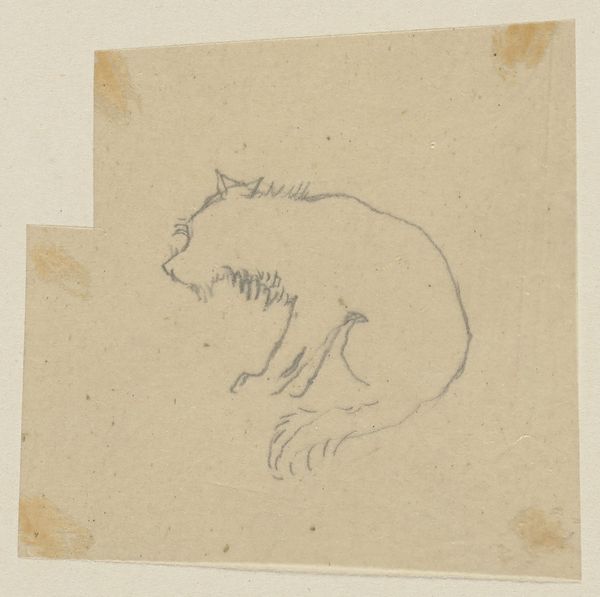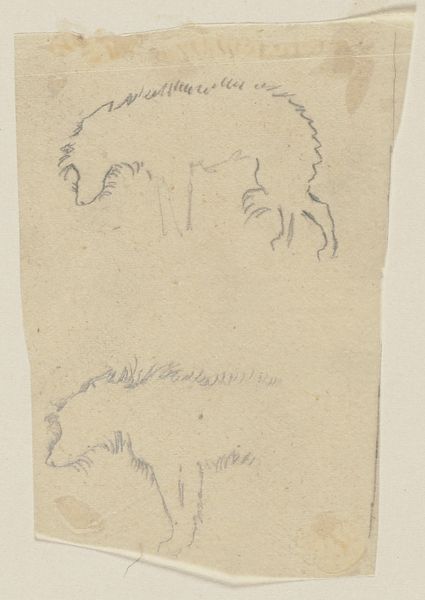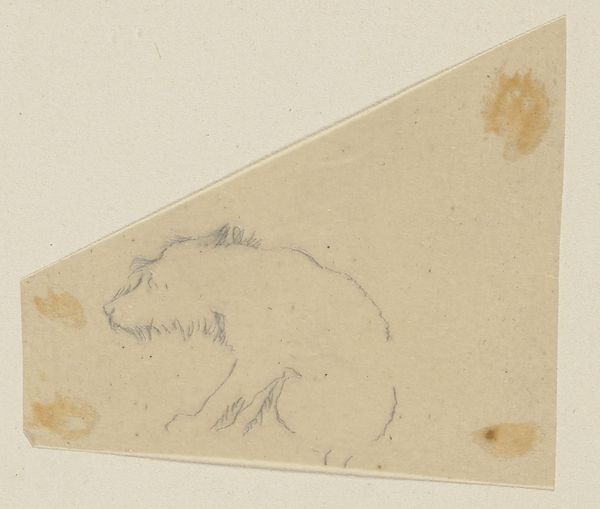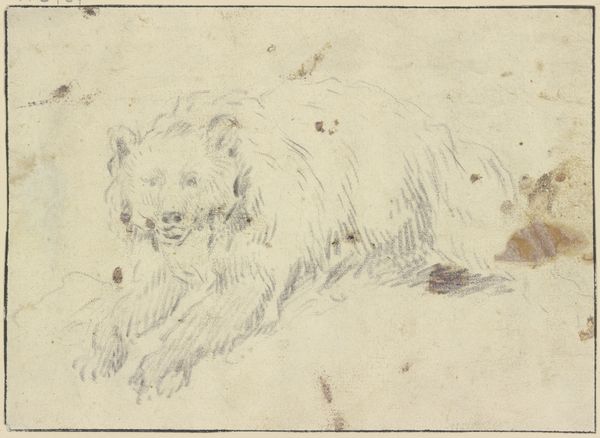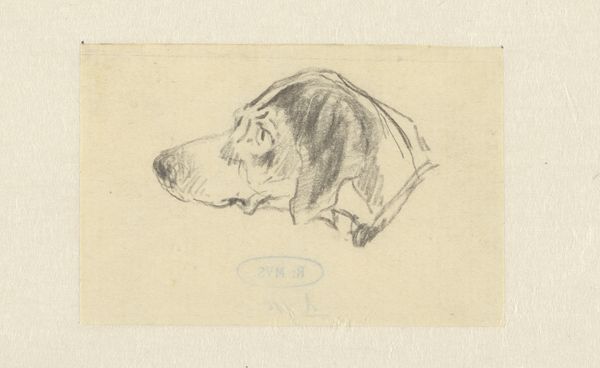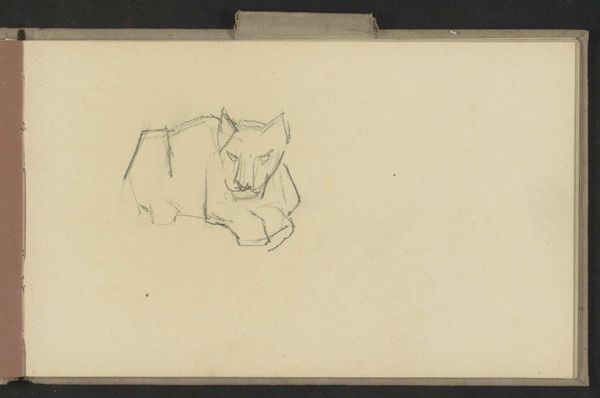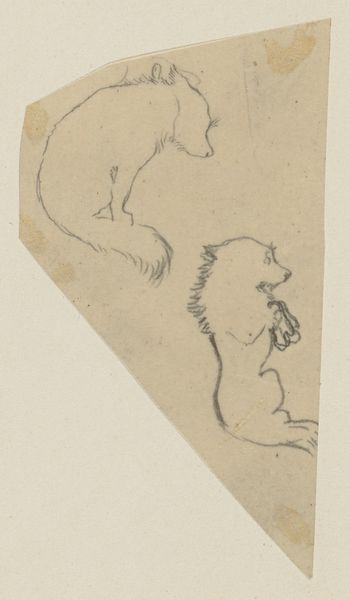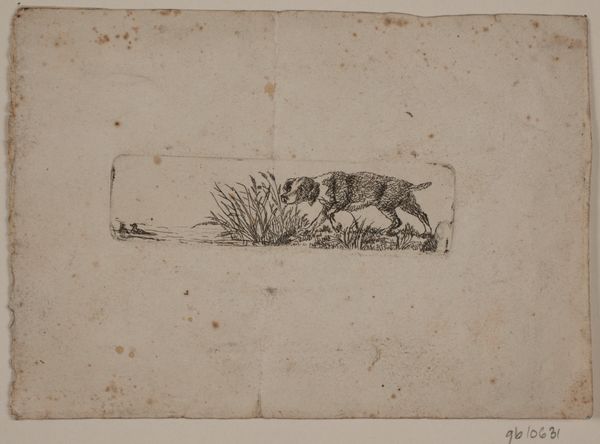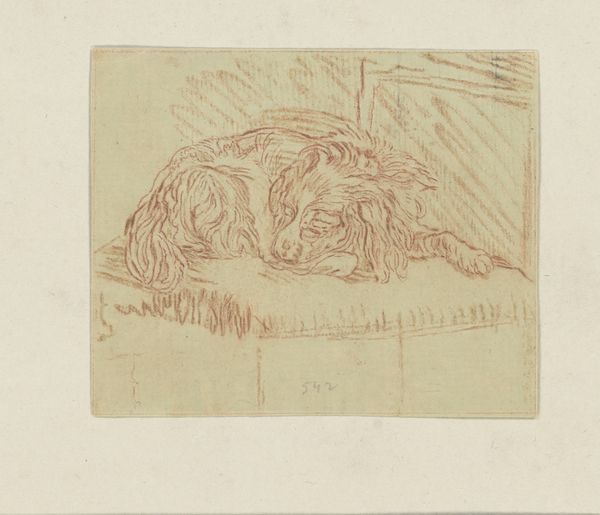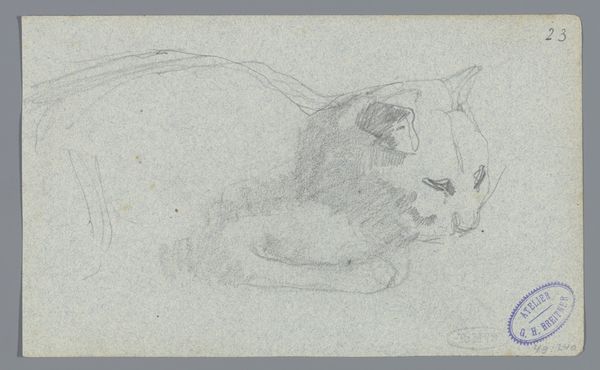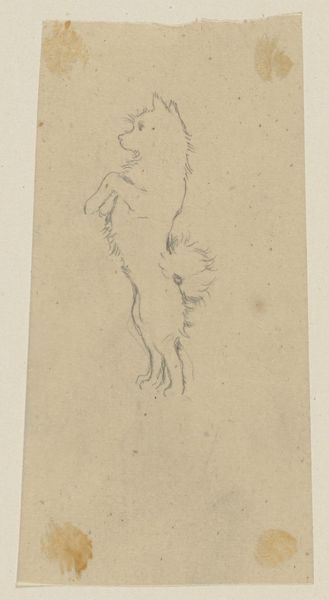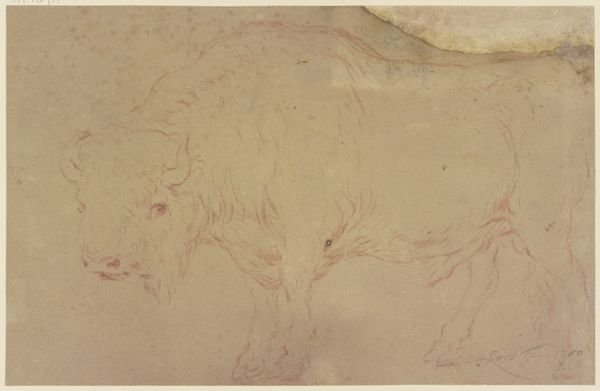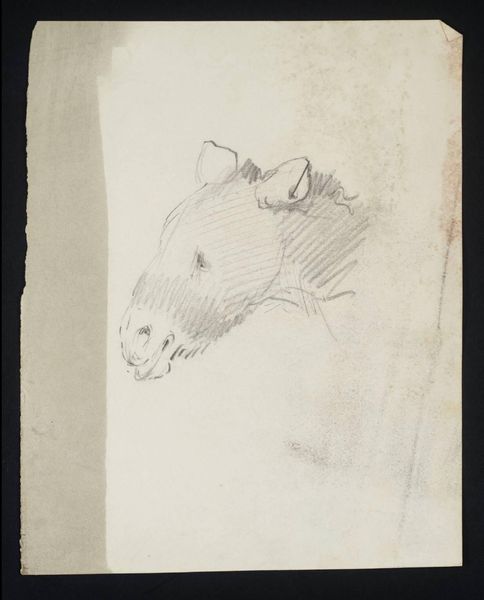
Der Hund des Mondes, sitzend und mit hängendem Kopf, nach rechts c. 1867 - 1868
0:00
0:00
drawing, pencil
#
drawing
#
16_19th-century
#
figuration
#
pencil
Copyright: Public Domain
Curator: This compelling drawing by Paul Konewka, titled "Der Hund des Mondes, sitzend und mit hängendem Kopf, nach rechts," or "The Dog of the Moon, Sitting and with Head Hanging Down, to the Right," dates from about 1867 to 1868. It’s executed in pencil on paper, and you can see it today at the Städel Museum. Editor: My immediate reaction is one of pathos. The hunched posture, the drooped head... it really communicates a sense of weariness or even dejection. Curator: Absolutely. And looking closer, one notes Konewka’s skillful use of pencil. The relatively sparse lines create a surprising degree of volume, defining the form and suggesting the weight of the animal’s body. The type of paper stock can suggest it was for studies or sketches related to other work; what else could that say about Konewka's use of the material in expressing an emotion? Editor: Well, in the context of its time, dogs often symbolized loyalty and service, even domestic servitude. The drooped head, from an activist viewpoint, could represent the weight of those expectations, a visual metaphor for the burdens placed on marginalized communities who are expected to unquestioningly serve. Curator: That’s a really powerful interpretation. Thinking about the material, you might also consider how accessible and unassuming a medium pencil on paper is. In a society defined by rigid class distinctions, its ubiquity may have allowed Konewka to portray something seemingly inconsequential like the emotional life of an animal while reflecting societal strains that were otherwise taboo. Editor: That brings up interesting connections between labor and material. Pencil drawing requires careful mark-making, it is painstaking, repetitive effort. Does that work mirror the conditions for service or support workers to express these feelings with an honest posture? Curator: An astute observation. Further considering the scale—it’s a rather small work, roughly the size of your hand—it prompts the question of production versus intention. Was it preparatory study towards another larger artwork or end to itself, what might be its relationship to ideas around labor, industrialization, or leisure, the ability to create or own such object? Editor: The sketch is unfinished. Given that and everything we've just discussed, it gives me pause to question the meaning or utility behind art: Konewka leaves us with an honest work in progress to contemplate. Curator: It certainly speaks to that raw emotive capacity, a quality captured economically through simple means. Editor: Ultimately, its emotional impact resonates regardless of its potential preliminary role; a sensitive portrayal worth remembering and carrying forward.
Comments
No comments
Be the first to comment and join the conversation on the ultimate creative platform.
